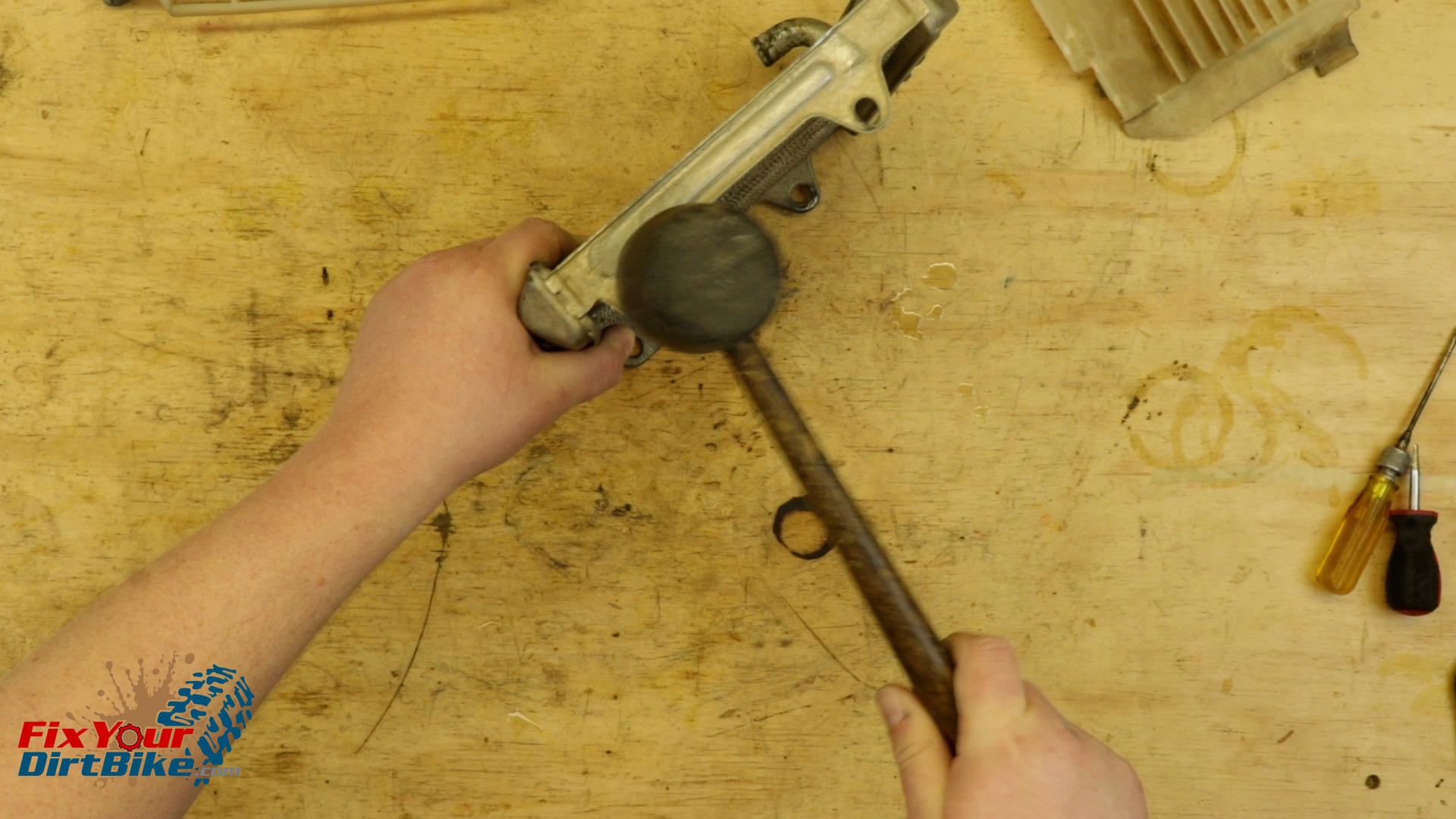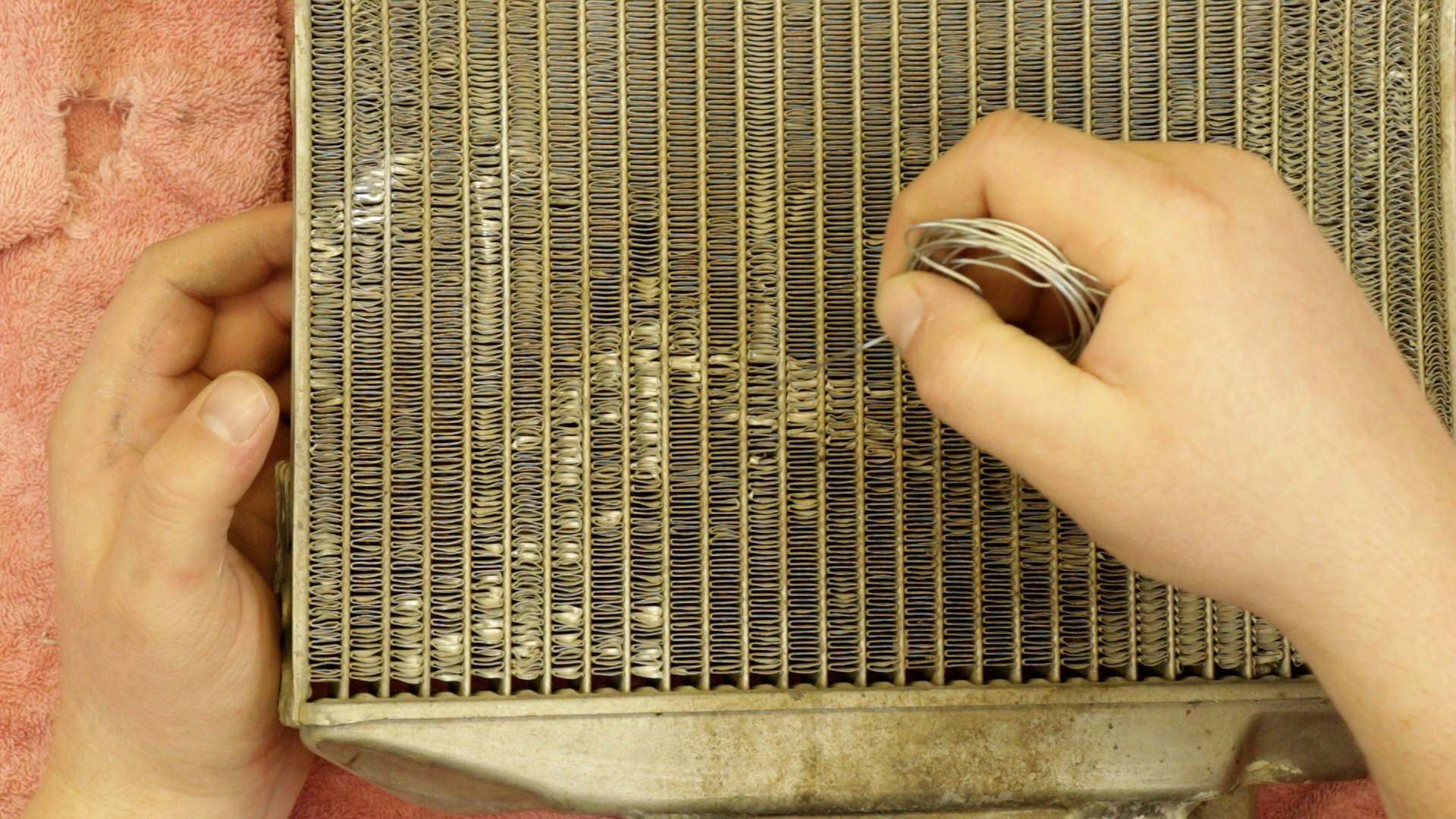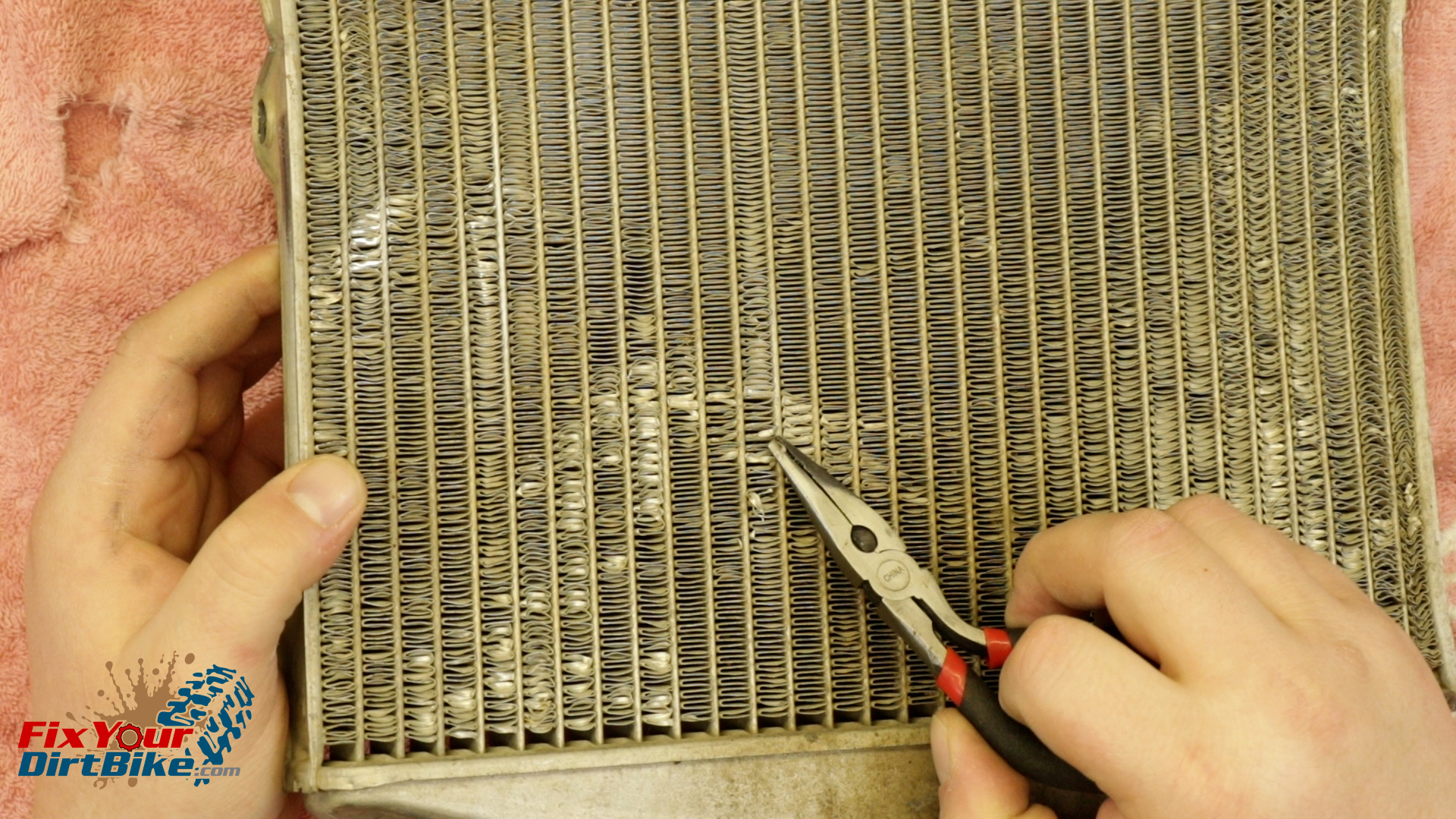How To Service The Radiator On Your 1997-2001 Honda CR250
 The radiator is the most fragile component of your dirt bike’s engine, but it’s mounted right behind the fender, so you should inspect it regularly.
The radiator is the most fragile component of your dirt bike’s engine, but it’s mounted right behind the fender, so you should inspect it regularly.
On 1997 – 1999 models, the radiator is one piece, and on 2000 – 2001 models, the radiator is a two-piece design with hoses connecting each side. This service applies to both types of radiators, as well as pretty much every radiator.
My radiator looks half-way f****d but still works so…
Before we begin, this is one of those situations where I’m not going to make much effort to fix the part because it’s just not worth it for me. I can get an aftermarket radiator with hoses for around $100, and it will be here in two days.
I’m going to fix the bent tab, test it, then correct the fins. If I find a leak, obstruction or, internal corrosion, I’ll just get a new one, but I’ll still cover how to fix those issues.
Related: 97-01 Honda CR250 top End Service – Introduction
The Tools You Will Need Are
- Towels
- Test Tub
- Water
- Flat Head Screwdriver
- 6mm Socket
- Socket Wrench
- Handy wire
- Epoxy Resin
Pre-Service Notes
- You can buy all the parts and tools you need through our partner links.
- Click here to open the specifications table in a new window.
- Service pictures with captions follow the steps below.
Radiator Components
- Check your cooling hoses for pliability and general deterioration, if they are stiff, they need to be replaced soon.
- Make sure the overflow tube is in good condition, as you can tell, mine got cozy with the exhaust.
- Check the cap rubber and spring condition, if the rubber is cracked or the metal has excessive corrosion, replace it.


Body
- Strip your radiator and give it a good dry brushing with a SOFT brush to avoid damaging the fins.
- Do NOT use compressed air to clean the radiator.
- Inspect the radiator body for any obvious damage like cracks, huge dents, or bent mounting tabs.
- If you see a greenish residue on the body, there’s probably a leak nearby.


Mine took a hit to the lower right, and the sides have been pushed in. There isn’t much I can do about the sides, but I can bend that mounting tab back into place. After some percussive maintenance, it’s time for testing.

Testing
This test will cover three things: big leaks, flow, and corrosion.
- Cap the radiator, hold it flat and fill it with water.
- Hold the radiator flat for a few minutes and check for leaks. If you find any, mark them with a sharpie.
- Plug one end of the radiator with your finger and turn it s,o the open end is lower. If the water holds, your radiator is sealed, if it has a leak, the water will drip or trickle.
- Release your finger and watch the flow, if the flow is weak, you have an obstruction.
- If your flow is obstructed, you probably have corrosion in the radiator body.
- Repeat with the other end.



The last cooling system test to perform is a pressure test, and the only way to do this accurately is with a specialized testing tool. The only way to perform a pressure test at home is to install your radiator, bring your bike up to operating temp and check for leaks.
Related: Stay on track with this steering stem bearing service for you4 ’97-’01 CR250
Radiator Repair
- If you can locate the source of a leak, you can seal it with a high heat epoxy resin.
- If corrosion is evident in the radiator, you will need to reinstall it and run cleaner through the system, then flush with fresh coolant.
- If the flow is still obstructed, get a new radiator.
The crack by the mounting tab on my radiator didn’t cause a leak, but I’m going to patch it, so it doesn’t get any bigger.
Radiator Fin Correction
- These fins look terrible, but looks can be deceiving.
- Hold your radiator up to the light, If you can see through, air can move through.
- I’m going to correct a few of the bad spots, but beyond that, it’s not worth it. Plus, the more you correct the fins, the more chance of causing more damage.
- When correcting the fins, push from the other side with a wire instead of trying to pry them out from the front.
- As you go, the folded fin will most likely break instead of straightening, but that’s ok because unrestricted airflow with a smaller surface area is better than nothing.



Keep Your ’97-’01 CR250 Running Right!





